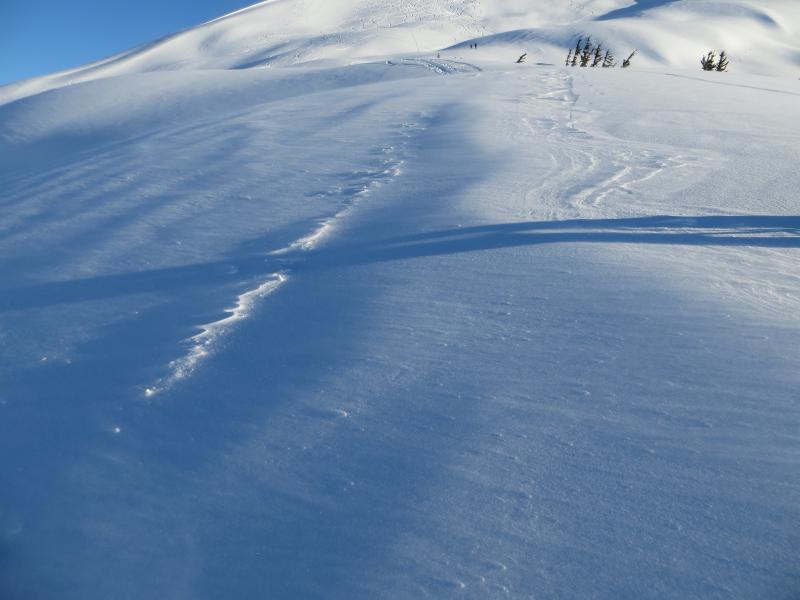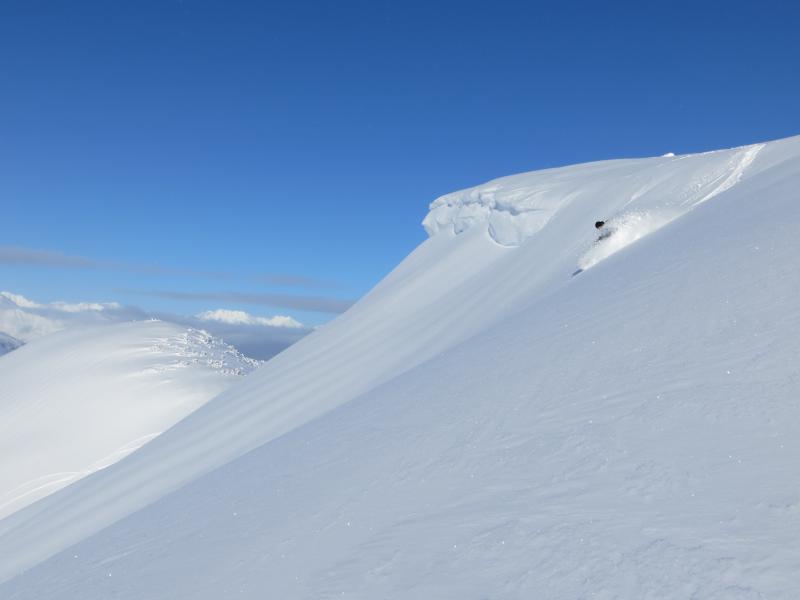Wind Loading and Recognizing Loading Patterns
It’s important to be able to recognize wind loaded slopes when traveling in
avalanche terrain. Here are a few things to pay attention to that will help in
figuring out wind loading:
Windward vs Leeward
The windward side of a slope is the side that is exposed to the wind. Windward
slopes tend to be more scoured and hold less snow. Clues such as rocks and
exposed vegetation will help in recognizing windward slopes. Leeward slopes are
the opposite and tend to accumulate greater amounts of snow.
Wind Etching/Sastrugi
Winds will undercut the surface snow and form ridges on the snow surface. Over
time and with continued wind, these patterns become more obvious and turn into
sastrugi. This pattern shows up as the opposite of cornices. Picking out these
patterns as you’re moving through terrain might help in figuring out where you
might encounter wind loaded slopes. The undercut part of sastrugi or wind
etched snow will point into the direction that the wind has been coming from.
Cornices
Cornices form typically on ridegtops where strong winds and greater snowfall
amounts quickly load slopes. Cornices tend to form large masses of unsupported
snow that can hang suspended for months.
Pillows
Wind slabs are often a little harder to pick out than a cornice. The surface
will appear smooth and “pillowy”.
In general, the more recently a slope has been wind loaded, the more sensitive it will be to triggers. Avoiding slopes that are being actively loaded is a good habit to get into.




